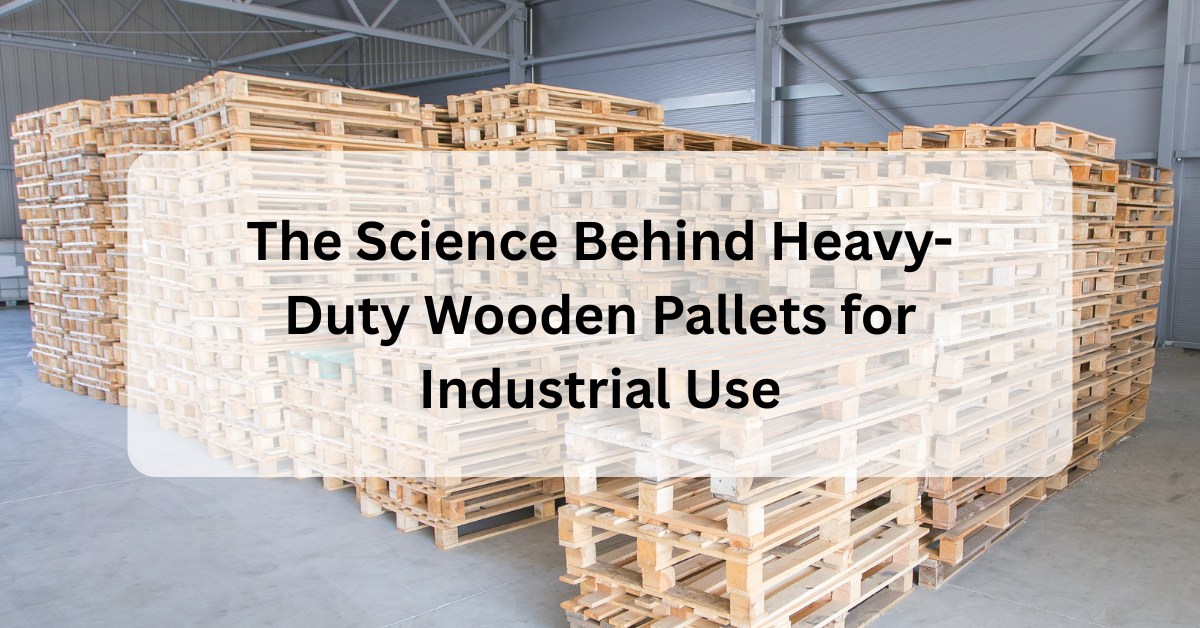In the industrial world, the humble pallet does far more than simply support goods in transit. It’s a foundational element of the supply chain—designed to carry tons of weight, endure long journeys, and withstand the harshest warehouse conditions. Among all material options, wooden pallets remain the preferred choice for heavy-duty industrial use.
So, what exactly makes wooden pallets strong, reliable, and suitable for heavy equipment and high-volume logistics? In this article, we’ll explore the science behind their construction, the difference between hardwood and softwood, how load-bearing capacity is tested, and how Kaibeng ensures top-tier pallet quality for Singapore’s most demanding industries.
Why Wooden Pallets Remain the Industrial Standard
Despite alternatives like plastic or metal, wooden pallets continue to dominate the logistics industry. Why? Because they strike the perfect balance between strength, durability, affordability, and repairability.
Wood is a natural shock absorber. It’s strong yet slightly flexible, which means it can handle impacts and distribute loads evenly without cracking. Wooden pallets are also easy to customize, making them ideal for industries that deal with unique equipment sizes or complex supply chain needs.
Hardwood vs. Softwood Pallets: What’s the Difference?
One of the first decisions in pallet engineering is choosing the type of wood. Both hardwood and softwood are commonly used, but they serve different purposes based on load requirements and budget.
🔹 Hardwood Pallets
- Made from species like oak, beech, or maple
- Denser and heavier than softwood
- Higher load-bearing capacity
- Excellent for reusable, multi-trip pallets
- More expensive, but ideal for long-term industrial use
🔹 Softwood Pallets
- Commonly made from pine, spruce, or fir
- Lighter in weight
- Cost-effective and suitable for single-use or export pallets
- Easier to cut and assemble, speeding up production
At Kaibeng, we use both hardwood and softwood depending on your needs. For example, a one-time international shipment may use ISPM 15-treated softwood, while a warehouse storing heavy machinery might require a more robust hardwood wooden pallet.
Load-Bearing Capacity: More Than Just Wood
The strength of a wooden pallet doesn’t rely on the type of wood alone. The design, construction method, and fasteners used all contribute to its ability to hold weight.
Key Factors Influencing Pallet Strength:
- Deck Board Thickness: Thicker top and bottom boards improve load distribution
- Spacing of Boards: Proper gaps reduce sagging and increase stability
- Nail/Hinge Strength: Corrosion-resistant fasteners prevent structural failure
- Block vs. Stringer Design: Block pallets (with both parallel and perpendicular supports) offer four-way access and higher weight tolerance
At Kaibeng, all wooden pallets undergo rigorous engineering to match their intended industrial application. Our team ensures each pallet type meets safety and performance expectations.
Pallet Testing: Ensuring Durability in Real-World Conditions
Before any wooden pallets leave our facility, we put them to the test—literally. Quality assurance involves multiple durability and strength evaluations to ensure reliability under industrial conditions.
Common Tests Include:
- Static Load Testing: Measures how much weight a pallet can carry while stationary
- Dynamic Load Testing: Tests how pallets behave during movement (e.g., with forklifts)
- Racking Load Testing: Determines performance when pallets are placed in storage racks
- Drop Tests & Impact Resistance: Simulates warehouse accidents or transport mishandling
- Moisture Content Measurement: Wood is checked to ensure it’s within acceptable moisture levels to avoid warping or fungal growth
By applying international standards like ISO 8611 and ASTM D1185, Kaibeng guarantees that our wooden pallets are built for long-term industrial performance.
How Kaibeng Ensures Pallet Quality in Singapore
At Kaibeng Wooden Case Mfg Pte Ltd, we combine decades of experience with modern quality control to deliver high-performance wooden pallets for various industrial sectors, including:
- Manufacturing
- Construction
- Electronics
- Logistics & Distribution
- Aerospace and Defense
Here’s how we maintain quality at every stage:
✅ Material Sourcing: We use responsibly sourced wood and choose timber species based on application-specific needs.
✅ ISPM 15 Certification: All our export-ready wooden pallets are heat-treated and marked to meet international shipping regulations.
✅ Custom Design & Engineering: Whether you need 2-way or 4-way entry pallets, single-deck or double-deck, we tailor every design to your cargo.
✅ In-House Testing: Our pallets go through load testing and quality checks to ensure durability before dispatch.
✅ Fast Turnaround & Local Production: With our facility in Singapore, we can deliver custom or bulk orders quickly and efficiently.
Conclusion
In industries where equipment is heavy, operations are fast-paced, and safety is paramount, using reliable wooden pallets is non-negotiable. The science behind pallet strength goes far beyond stacking boards—it’s about wood quality, structural engineering, and rigorous testing.
Whether you’re storing machinery, exporting heavy goods, or managing high-volume warehouse logistics, Kaibeng has the expertise and infrastructure to provide heavy-duty wooden pallets you can depend on.
